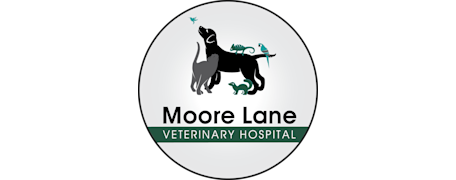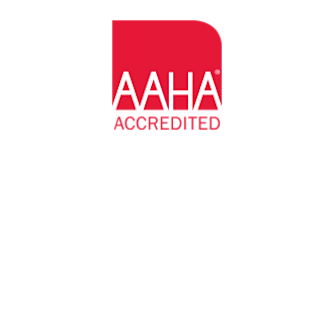Moore Lane Veterinary Hospital

Wildlife Care

Why The Change In The Treatment of Wildlife?
Historically, this mission to treat you like our family has meant that we would take in injured wildlife, treating the animals that we felt had a good chance to be rehabilitated and humanely euthanizing those who could not. In examining the impact of our highest intentions, we have determined that this course of action is, in fact, not in the best interests of the wild animals we care so much for.
As the adage goes “If you care, leave it there.” What we have found is that the vast majority of wildlife brought in has a better chance of survival and comfort being left where they are than being brought into a veterinary clinic. As an example, countless baby bunnies are presented to our facility each year. It is unusual for rabbits to stay with their young throughout the day. In fact, they often only visit the nest for about five minutes at dawn and dusk to feed their young before returning to the field. Because these young rabbits appear to be orphaned, even when they are not, well-meaning Samaritans may bring them to the vet. The veterinary clinic is not a good environment for these neonatal animals. Not only is there frequent noise, but the smell of predators – including dogs and cats – permeates a veterinary clinic. Because of their sensitivity to these changes, these bunnies have a very poor survival rate and the vast majority parish despite not having faced a threat where they were.
Similarly, many wild animals suffer injuries that are either severe enough to be fatal without our intervention or face minor injuries that would heal in the natural environment, but the animal’s life is put at risk because they are brought into the manmade environment of a veterinary hospital.
In accepting these animals, we have inadvertently encouraged people to bring them into an environment where they are more at risk and less comfortable. It’s with this in mind that the Moore Lane Veterinary Hospital team has decided to change our approach towards wildlife; we will no longer be accepting injured wildlife at our facility with the exception of ducks and raptors (owls, eagles, hawks, and falcons) as we are a drop off point for the Raptor Center in Bozeman and able to effectively triage these species. Ducks are triaged and referred to WJH bird resources.
For other species other than Eagles, Owls, Hawks, and Falcons we would like to direct you to the following resources:
WJH Bird Resources: (406)-652-7175
Fish, Wildlife, and Parks: (406)-247-2940
Safe Handling Tips
Public safety is always our first concern when dealing with wildlife. Do not approach any animal that appears aggressive in nature. Wear thick leather gloves and attempt to put the wild animal into a cardboard box or disposable container. Many wild animals carry diseases that are transmissible to either you or your pet. Do not risk your own safety when attempting to help a wild animal. Although it may be tempting, we recommend that you do not allow your children to hold or touch a wild animal.
For larger mammals that can potentially carry the rabies virus, contact Fish, Wildlife, and Parks. It is unlawful to keep or attempt to rehabilitate these animals without a license to do so. Examples include raccoons, skunks, foxes, and coyotes.
For large game animals, we also recommend you call Fish, Wildlife, and Parks. Although we would love to play a larger role in helping injured game, we do not have the capacity to do so at this time.
For birds of prey, like raptors or owls, we rely on the Montana Raptor Center (MRC) in Bozeman. MLVH is happy to provide temporary care and sanctuary for the bird while MRC arranges transport.
MLVH is always looking to partner with other licensed and reputable rehabilitation centers in the area that specialize in helping certain animals. Whenever possible, we will utilize the more specialized rehabilitation source to try to ensure the best chance of survival for all Montana’s creatures.
What to do if you find an injured small mammal or bird:
Obvious Injury
If the animal has an obvious injury or was brought to you by your cat or dog, the community is welcome to relinquish the animal into our care. Our veterinarians evaluate the animal and our staff will attempt to rehabilitate the wildlife until it is safe to release back into nature. If the animal is suffering and we are unable to treat the injuries, we will humanely euthanize the animal.
Baby Bunnies
Rabbits only return to their young at night and feed them only once a day. It is not uncommon to find a nest of baby bunnies with no mother in sight. Bunnies can be extremely difficult to rehabilitate, and their best chance of survival is with their mother. Unless they are injured or an animal is attacking their nest, they should be left alone and mom will return.
Baby Squirrels
Baby squirrels are most often found when they have fallen out of their nest. If the baby has a fluffed out tail, it is a juvenile and should be left alone unless the baby is injured or sick. If the baby doesn’t have a fluffy tail yet, the best option is to try to find mom. Place the baby near the closest tree and keep pets away. From a distance, watch to see if mom returns. If she doesn’t, then we recommend bringing them in for us to provide care.
Baby Ducks
Baby ducks are typically not left unattended. If you find a lone baby, try to observe the baby and ensure your own pets aren’t allowed contact. If the mom doesn’t return in a short time, we recommend bringing them in for us to provide care.

